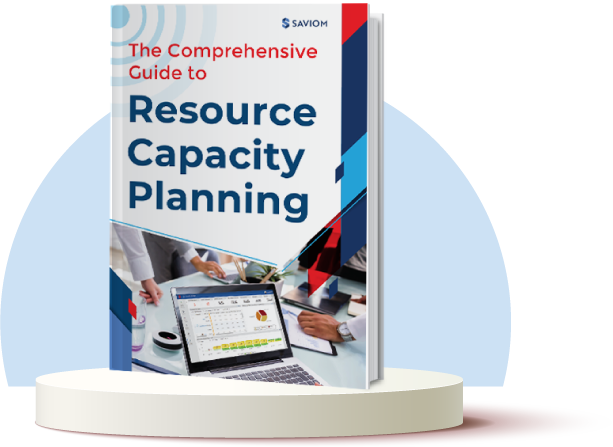Imagine hiring two new candidates for your company without a proper plan or strategy and later realizing there isn’t sufficient work which eventually puts them on the bench. Not only does it lower employee morale, but it also adds to the bottom line, affecting the organization’s overall profitability. Have you ever wondered why this may have occurred? The reason could be a misalignment between the skillset and the requirement or cultural incompatibility. This is why an effective hiring approach is crucial.
Every employee is a significant contributor to an organization’s growth, success, and profitability, and they are also the most important investments of any firm. Thus, if the hiring strategy does not align with the long-term business goals, it may lead to a large bench of mismatched skillset resulting in lost market opportunities.
By developing an organized and comprehensive hiring strategy, you will be taking the first step toward setting up your business for success by attracting the right talent.
This article highlights the significance of an effective recruitment strategy and how to form one.
But before that, let’s start with the basics.
What is an employee hiring strategy?
A hiring strategy is a plan of action that describes a company’s recruitment process in detail. The strategy comprises basic steps such as defining job roles, descriptions, etc., selecting the right platform for a job posting, and even using more advanced techniques, such as an applicant tracking system.
Using these strategies will ensure that you attract, identify, and hire the right people for your company’s vacant positions. Also, it is vital to ascertain that this employee recruitment plan aligns with the company’s strategic goals.
To better understand the importance of hiring strategy, let us first examine some of the main factors that influence it.
Read More: Why an Effective Onboarding Process is Essential for Employee Satisfaction
Factors that can influence hiring strategy
Recruitment is an essential function of human resource management that must be performed diligently. There are number of internal and external factors that influence the hiring strategy. Let’s discuss this below;
Internal factors:
The internal factors are the elements within the organization that impacts the hiring function.
One such internal factor is the recruitment policy which entails the needs and organizational objectives. In addition, the hiring process varies depending on the job requirements. For example, for short-term projects, the company looks for part-time and contingent employees. However, it is viable to employ a permanent employee for long-term projects.
Some companies also follow the policy of hiring local citizens as they understand local languages and business practices better. In addition, the budget, followed by the organization’s growth rate or scalability, also determines the hiring process.
External factors:
External factors are elements that cannot be controlled by an organization yet highly influence the recruitment process.
The first external factor is the demand and supply of employees with specific skill sets in the labor market. If the demand for a specific skill exceeds the supply in the job market, the hiring will be competitive as every firm will want to recruit the best talent. On the contrary, if organization is hiring a skillset with lower demand in the job market, recruitment will be fairly easier.
Furthermore, employment rates of specific locations play a significant role in hiring. For instance, if a firm recruits from a place with a high unemployment rate, it will have a greater chance of finding skilled employees quickly. Along with this, the company’s reputation in the job market, reviews from existing and former employees also matter in attracting qualified employees.
With all the factors in mind, let’s understand the significance of the recruitment strategy.
Significance of recruitment strategy
Attributing to the evolving market trends, organizations’ work culture and practices have experienced a paradigm shift too. As a result, the traditional recruitment process has taken a back seat in this current employee-centric era.
Thus, companies need a solid recruiting strategy integrated with inclusive onboarding to attract and retain the best talent. It will help build an optimized workforce that will help maintain the company’s competitive edge. Furthermore, implementing an effective recruitment strategy standardizes the entire hiring process and increases transparency. This ensures that discrimination is avoided at all stages of recruitment, as it opens the door for merit-based hiring.
A smart hiring and selection plan also promotes better coordination between the resource and HR managers and identifies skills and competency gaps within the company in advance. Thus, recruiters can hire resources with the desired skill set ahead of time and avoid last-minute hiring.
In a nutshell, an efficient recruitment system is a driving force that helps a company onboard the best talent and establishes its position in the job market.
Before understanding the various strategies, you can use for an effective hiring process; let’s know the difference between lateral and mass hiring.
Read More: 9 Effective Employee Retention Strategies for Your Workforce
How recruitment strategy differs for lateral hiring and mass hiring?
Lateral hiring
The term lateral hiring in an organization describes the process of recruiting talent who is already employed by another organization. It is also known as strategic hiring that attracts experienced and qualified employees and will benefit the organization in the long term.
Lateral hiring involves hiring people through various social media sites or niche-specific job portals and is held at any time of the year when the need for competencies arises. Employees can also be hired through referral programs. One differentiating factor is that it involves more planning and a stringent screening process compared to mass hiring as it constitutes hiring experienced or highly-skilled candidates.
Mass hiring
Mass hiring is recruiting a large number of employees within a short timeframe. The employees are usually fresh graduates hired from an educational institution. Many companies practice mass hiring drives to scale their workforce and stay in line with the growing demand of the business. It is generally observed in IT companies.
However, it needs meticulous planning and systematic execution to get the desired result. Here the recruiting strategy can include hosting hiring events, developing a fast-screening process, and strategizing the training and onboarding. Unlike lateral hiring, mass hiring happens around the time when the students are about to graduate.
The following section outlines some of the most critical steps you should take to build a successful hiring plan for your organization.
How can you create an effective hiring strategy?
Before hiring the ideal candidate, there are many processes involved, such as attracting top talent, reviewing hundreds of resumes, and conducting an interview every other day. Effective hiring will help you smoothen the onboarding process and make it hassle-free and less time-consuming.
Here are some strategies you can use to create an organized hiring process.
Connecting with the resource manager to understand their needs.
The resource manager is responsible for identifying and allocating the necessary resources as per the project manager’s request. They have complete visibility of the future skill demand, existing skill gaps, etc., in the enterprise. Thus, managers coordinate with HR professionals to explain the resource requirements and initiate the hiring process. in case of any skill shortages within an organization
The hiring requirements, i.e., whether you require an on-demand contingent workforce or permanent employee, can vary depending on the project’s duration and business goals. Therefore, HR recruiters must constantly stay in touch with resource managers to understand their needs, streamline the entire recruitment process, and select suitable candidates.
Read More: Resource Manager vs. HR Manager: What Are Their Roles & Responsibilities?
Develop a clear employer brand
According to a 2018 U.S. site survey on Glassdoor, 83% of job seekers are likely to research company reviews and ratings when deciding where to apply.
The employee value proposition (EVP) and employer brand (EB) of your organization play an important role in recruiting new employees. Employer brand is the image your company has in the marketplace. It’s crucial to align your organization’s branding with its values, vision, and culture. It displays the benefits of choosing your company over a competitor and fosters loyalty.
A company’s employee value proposition refers to the rewards and benefits it offers employees in return for their loyalty. With a well-developed EVP, an organization’s staff are more likely to discuss the company’s accomplishments, which ensures good publicity and more quality referrals.
Create compelling job descriptions
A well-written job description is the most critical part of the hiring process. It is crucial to craft a clear, meaningful job description so that candidates know for which position they are applying. In addition, ensure the exact title, roles, responsibilities, and salary of each post to increase interest and attract the suitable candidates.
Also, it is imperative to explicitly highlight the work culture when creating a convincing job description. Furthermore, you can also include popular keywords in your description based on what your ideal job applicant would likely search for. Since job portals also have backend SEO processes, it is crucial to include high-ranking keywords.
Implement an employee referral program
According to a survey, 82% of Employees rated Employee Referrals above all other candidate sourcing options.
Since your existing workforce is familiar with the organization’s culture and needs, they can help you improve the recruitment process. A referral program encourages your current employees to refer the top talent in their field of expertise. It will also benefit the candidate, who will become more invested in the company since they know someone there.
Additionally, companies can offer incentives such as referral incentives or goodies to employees for finding candidates that are ideal for the available position. This will also help keep employees engaged, reduce turnover and retain them. The referral programs make recruitment less cumbersome since the selection process is not as time-consuming. Moreover, it also strengthens the relationship between employers and existing employees.
Read More: How Resource Management Helps in Reducing the Hiring/Firing Cycle?
Leverage an applicant tracking system (ATS)
An applicant tracking system (ATS) is a tool that automates the process of posting jobs and finding relevant candidates or resumes. First, it is used to evaluate candidates for a particular position. Then, the ATS collects, analyzes, and stores multiple resumes reducing the manual work for the HR managers.
The algorithm then compares resumes to the job description automatically. In the following stages, the resumes that match the most are advanced.
According to Capterra, 94% of recruiters and hiring professionals say their applicant tracking system (ATS) has positively impacted their hiring process.
Additionally, it also saves the resume in case a future need arises.
Use social media platforms & niche job boards
It’s no secret that social media has created an excellent opportunity for companies to hire talents due to increased awareness and online presence. Therefore, promoting your company on social media platforms like LinkedIn among others can help you attract suitable candidates. For example, if your company has a multigenerational workforce, perhaps you should post a picture of them on social media. It will highlight your company’s work culture, build your reputation, and create a positive image.
Along with social media, certain platforms are built for specific industries. Thus, if you are looking for niche skills, running a search on different niche boards for candidates would be beneficial. For instance, if you need a software developer, searching for them on a forum for software professionals is recommended.
Aim for gender-balanced & diverse hiring
Diversity and inclusion in your workplace will help your team emulate what the outside world looks like. In order to achieve diversity goals, businesses need to avoid unintentional bias during the recruitment process. Using techniques such as blind resume reviews that remove personal information makes the selection process more efficient. Additionally, the use of artificial intelligence to review applications through an applicant tracking system can negate chances of partiality. Also, it is essential for the organization to expand its boundaries and look for a diverse workforce by hiring from any location.
Moreover, it is always advisable to ensure that the language used in job advertisements is inclusive and does not inadvertently exclude certain individuals. For example, using overtly masculine phrases and terms can discourage women from applying. Another important aspect is to ensure pay equity for all gender roles and provide training to HR managers on diversity intelligence. They will significantly contribute to the inclusive growth of the company.
Read More: What is Diversity in Project Management and its Importance?
Conclusion
It is clear from the above discussion that the recruitment process should be optimized to attract top talent– a critical component for the success of any organization. By implementing the strategies outlined above, you can create an effective hiring process that gives you an edge over your competitors. Furthermore, it will boost workplace productivity and profitability by building an optimized workforce.
The secret of my success is that we have gone to exceptional lengths to hire the best people in the world.” – Steve Job.”
The Glossary
Read More: Glossary of Resource Workforce Planning, Scheduling and Management
The SAVIOM Solution
SAVIOM is the market leader in offering the most powerful and configurable solutions for managing enterprise resources efficiently and effectively. Having more than 20 years of experience, this Australian-based MNC has a global presence in over 50 countries. It is also popular with more than 100 customers and helps them achieve their business goals. SAVIOM also has products for project portfolio management, professional service automation, and workforce planning software which can be easily customized as per business requirements










